| |
|
description du
genre par Clark |
|
The Mesozoic and
the Cenozoic Echinodermata of the United States, 1915, p.153 |
| |
|
2e
genre. - MARETIA, Gray, 1855.
| |
 |
|
Test de taille moyenne, cordiforme, dilaté et plus ou moins échancré
en avant, subacuminé et tronqué en arrière, ordinairement plane en
dessus. Sommet apical excentrique en avant. Aire antérieure différente
des autres, formée de pores petits, espacés ; aires ambulacraires
paires pétaloïdes, étalées, allongées, à fleur de test, subacuminées à
leur extrémité. Tubercules de deux sortes, les uns petits, serrés,
épars, augmentant sensiblement de volume à la face inférieure, les
autres beaucoup plus gros, fortement scrobiculés, peu abondants,
espacés, limités à la partie antérieure, ne se montrant jamais sur
l'aire interambulacraire postérieure. Plastron très large et lisse à
la face inférieure. Péristome excentrique en avant, faiblement labié,
semilunaire. Périprocte arrondi, un peu ovale, s'ouvrant au sommet de
la face postérieure. Appareil apical petit, compacte, muni qde quatre
pores génitaux. Point de fasciole péripétale. Fasciole sous-anal très
difficile à distinguer, souvent incomplet.
Rapports et différences.
- Ce genre a été démembré des Spatangus, dont il se distingue
par l'absence de gros tubercules dans la région postérieure. Les
Euspatangus se rapprochent de notre genre, mais ils s'en éloignent
par un fasciole péripétale qui limite, vers le pourtour les gros
tubercules de la face supérieure.
|
|
Ainsi que l'a reconnu M. A. Agassiz, le genre Hemispatangus
doit être réuni au genre Maretia, plus ancien de quelques
années et dont il ne diffère par aucun caractère important. Certaines
espèces de Maretia fossiles paraissent dépourvues de fasciole
sous-anal, et nous avions pensé à un instant à conserver pour ces
espèces le nom d'Hemispatangus. Nous y renonçons quant à
présent. Chez les véritables Maretia fossiles, le fasciole est
souvent très vague, mal conservé, difficile à saisir, et le plus
souvent il est impossible de reconnaître si l'exemplaire qu'on examine
est muni d'un fasciole. Le genre Hemispatangus ne saurait donc
être maintenu dans la méthode.
Le genre Maretia commence à se montrer dans le terrain
tertiaire éocène ; il persiste à l'époque miocène, et existe dans les
mers actuelles.
|
|
| |
|
 |
| |
| |
Maretia aragonensis
Cotteau,1887 |
|
|
| |
|
diagnose originale de
l'espèce par Cotteau, 1887 |
|
Echinides éocènes
de l'Aragon, p. 2 |
| |
|
N°1.-
Maretia aragonensis Cotteau,1887. -Cette nouvelle espèce, dont
nous connaissons plusieurs exemplaires, nous a paru nouvelle. Sa forme
générale la rapproche un peu du Maretia desmoulinsi, du terrain
nummulitique de Biarritz (Eocène supérieur) ; elle en diffère d'une
manière positive par sa forme plus allongée, plus arrondie, moins
émarginée en avant par sa face supérieure plus déprimée, plus
uniformément bombée, par son sillon antérieur plus atténué, presque
nul vers l'ambitus, par ses aires ambulacraires plus étroites, munies
d'une zone interporifère moins large, par ses aires postérieures
relativement plus allongées, par ses petits tubercules plus inégaux,
par ses gros tubercules plus abondants, remplissant les deux aires
interambulacraires paires postérieures, tandis que chez le Maretia
desmoulinsi, ces tubercules, toujours moins nombreux, sont limités
à la région antérieure de ces mêmes aires.
Localité. -
Pobla de Roda (Aragon, Espagne)
Collection
Maurice Gourdon.
|
|
Le genre Maretia commence à se montrer à l'époque Eocène, où il est
assez abondant ; il persiste à l'époque Miocène et existe encore à
l'époque actuelle.
fig. in texte
|
|
| |
| |
Maretia aragonensis
Cotteau,1887 -
Yprésien inférieur, Huesca, Espagne, 34 mm |
|
|
| |
|
|
| |
| |
Maretia
aragonensis Cotteau,
1887 - Ilerdien moyen, Espagne, 32 mm |
|
|
| |
|
|
| |
| |
Maretia
aragonensis(Cotteau,
1887 - Ilerdien moyen, Espagne, 38 mm |
|
|
| |
|
|
| |
|
 |
| |
| |
Maretia carolinensis
Kier,1997 |
|
|
| |
|
diagnose originale
de l'espèce par Kier,1997 |
|
Oligocene
Echinoids of North Carolina, p.11 |
| |
|
Maretia
carolinensis, new species
FIGURE 6; PLATE 9: FIGURES 8,9; PLATE 10:
FIGURES 1-7;
PLATE 11: FIGURES 1,2
Diagnosis.—The species
is characterized by a wide test with width equal to length and by wide
petals.
Description.—Twenty-four
specimens (most fragments) are referred to this species. All specimens
are badly weathered, but one shows a fasciole.
Shape and Size: Five specimens show the dimensions of the test.
Length (L) 27.0-52.2 mm (mean 37.7); width approximately same as
length; width 99-103 percent of L (mean 101); greatest width central
to slightly anterior; height 39_44 percent of L (mean 42.7) with the
greatest height near posterior margin. Adorally, test depressed around
peristome.
Apical System: Located anterior at distance from anterior
margin equal to 40-45 percent of L (mean 44.9). Four genital pores,
ethymolytic with genital 2 extending posteriorly (Figure 6A).
Ambulacra: Anterior ambulacrum III not petaloid, in groove
extending from apical system to peristome; pores minute in slight
peripodia. Anterior petals long, wide; length 36.6-42.6 percent of L (mean
40.1); width 11-13 percent of L (mean 12.6). Pores deeply conjugate;
adapically (approximately one-half length of petal) pores in anterior
poriferous zones greatly reduced in size; petals closing distally with
50 petaloid porepairs in specimen 52.2 mm long, 50 in specimen 47.5 mm
long, 44 in specimen 36 mm long, and 42 in specimen 27 mm long. Not
possible to determine which plate bears first petaloid porepair.
Posterior petals with length 35.6-43.6 percent of L (mean 39.3), width
11.9-14.8 percent of L (mean 13.2); 50 porepairs in specimen 52.2 mm
long, 50 in specimen 47.5 mm long, 44 in specimen 36 mm long, and 42
in specimen 27 mm long.
Peristome: Anterior, located at distance from anterior margin
equal to 33 percent of L (measurable on one specimen). Labiate, wider
than high with width (measurable on two specimens) 19 percent of L and
height 8 percent of L (measurable on one specimen).
Periproct: Situated high on vertical posterior truncation
(Plate 10: Figure 3), opening with height equal to width, height
12.2-12.5 percent of L (mean 12.4). Occurring in plates 5-9.
Fascioles: No peripetalous fasciole. Subanal fasciole very
broad, width of area circumscribed by fasciole 51 percent of L, height
approximately 15 percent of L. Not possible to determine on which
plates fasciole occurs.
Tuberculation: Large tubercles on dorsal surface in all
interambulaca except posterior interambulacrum. Tubercles in deep pits.
Ventrally, large tubercles in ambulacra and interambulacra except
posterior paired ambulacra and posterior interambulacrum where
tuberculation absent anteriorly from peristome to midway to posterior
margin, tubercles small from midway to posterior margin.
Oral-plate Arrangement: Labrum long and narrow (Figure 6B;
Plate 9: Figure 9) with length 16.1-20.3 percent of L (mean 17.7),
extending posteriorly to or just posterior to suture between second
and third adjacent ambulacral plates. Sternal plates long and narrow,
length on single measurable specimen 34 percent of L, width of paired
plates equals 20 percent of L. |
|
FIGURE 6.—Maretia
carolinensis, new species: A, apical system of paratype USNM 398339
(x20); B, labrum and plastron of paratype USNM 398337 (xl). Both
specimens from float of the Trent Formation at Pollocksville state
quarry.
Comparison with other species.—This
species is easily distinguished from the other two species of Maretia
known from the United States. It differs from Maretia subrostrata
(Clark) from the middle Eocene Castle Hayne Limestone of North
Carolina in its wider test, with width 99-103 percent of L versus 89
percent of L in M. subrostrata. Its petals are much wider, with
the width of the anterior petals 13 percent of L and the width of the
posterior petals 15-18 percent of L versus 10 and 11 percent,
respectively, in the Eocene species. Finally, in M. carolinensis
the greatest width of the test is central whereas in M. subrostrata
it is anterior.
Maretia carolinensis differs for the above same reasons from M.
arguta (Clark) from the Winiona Sand of Lower Lisbon age of
Mississippi. As noted by Cooke (1959:81) and Kier (1980:50), M.
arguta may be conspecific with M. subrostrata.
Material.—Holotype: USNM
398338, from float of the Trent Formation, Pollocksville state quarry.
Figured
Paratypes: USNM 398337, 398339-398341, same data as holotype.
Configured Paratypes: USNM 492101-492124, same data as holotype.
Occurence.—North
Carolina: Trent Formation, Pollocksville state quarry.
fig. in planches
9, 10, 11 (extraits)
|
|
| |
| |
Maretia carolinensis
Kier,1997 - Oligocène,
Trent formation, Pollocksville state quarry, Caroline du Nord, U.S.A.,
37 mm |
|
|
| |
|
|
| |
| |
Maretia carolinensis
Kier,1997 - Oligocène,
Trent formation, Pollocksville state quarry, Caroline du Nord, U.S.A.,
47 mm |
|
|
| |
|
|
| |
|
 |
| |
| |
Maretia
cordiformis
(Mortensen,1948) |
|
|
| |
| |
Maretia
cordiformis
(Mortensen,1948) -
Miocène, Java, Indonésie, 25 mm |
|
|
| |
|
|
| |
|
 |
| |
| |
Maretia
grignonensis
(Desmarets,1836) |
|
|
| |
|
description de
l'espèce par Cotteau |
|
Paléontologie
française, terains éocènes, tome 1, p. 30 |
| |
|
N° 4. -
Maretia grignonensis (Desmarets)
Cotteau, 1880
Pl. 3 et pl.
4.
Espèce de taille moyenne, cordiforme, échancrée en avant, fortement
dilatée au milieu. Face supérieure plus ou moins renflée, subgibbeuse
en avant, légèrement carénée dans la région postérieure, déclive sur
les côtés, tronquée verticalement en arrière. Face inférieure tout à
fait plane, carénée et tranchante à l'ambitus. Sommet ambulacraire
très excentrique en avant. Sillon antérieur presque nul vers le
sommet, un peu renflé sur les bords, s'élargissant au pourtour qu'il
échancre d'une manière très sensible, cessant à quelque distance du
péristome. Aire ambulacraire impaire formée de pores simples, très
petits, disposés par paires obliques et espacées. Aires ambulacraires
paires pétaloïdes, ouvertes à leur extrémité, très légèrement
flexueuses, les antérieures écartées, presque droites, les
postérieures arquées et un peu arrondies au sommet ; zones porifères
déprimée, composées de pores inégaux, les externes un peu plus
allongés que les autres, unis par un sillon et séparés par une bande
de test oblique et granuleuse. Dans les aires ambulacraires paires
antérieures, la zone porifère antérieure est moins large que l'autre,
et les pores sont en partie atrophiés aux approches du sommet. La zone
interporifère est très étroite et couverte de petits granules. Dans
les aires ambulacraires paires postérieures, les zones porifères sont
égales, et la zone interporifère est relativement plus large. Petits
tubercules épars, inégaux, augmentant de volume sur le bord du sillon
antérieur, à la partie supérieure des aires interambulacraires, dans
la région infra-marginale et sur le milieu de l'aire interambulacraire
postérieure. De gros tubercules crénelés et perforés, entourés de
scrobicules larges et profonds, existent à la face supérieure, dans
les deux aires interambulacraires antérieures et dans la première
moitié des deux aires postérieures. Granules intermédiaires fins,
serrés, homogènes. La face inférieure est en partie occupée par un
large plastron, presque lisse ou finement granuleux, tuberculeux à la
base, qui correspond aux deux aires ambulacraires postérieures et à
l'aire interambulacraire impaire. Péristome très excentrique en avant,
semi-lunaire, labié, s'ouvrant à fleur de test. Périprocte assez
grand, irrégulièrement arrondi, placé au sommet de la face
postérieure. Appareil apical étroit, granuleux, muni de quatre pores
génitaux très ouverts et de cinq petites plaques ocellaires. Fasciole
sous-anal flexueux, finement granuleux, difficile à distinguer.
Un exemplaire du Lackenien supérieur de Wemmel (Belgique), faisant
partie du musée de Bruxelles, présente, adhérents au test, une grande
quantité de petits radioles : ils sont grêles, cylindriques, très
allongés, recourbés, lisses en apparence et variant dans leur
longueur, suivant la grosseur des tubercules sur lesquels ils sont
placés. La tête est arquée par un léger renflement ; ils diffèrent peu
par leur structure et leur aspect des radioles du Maretia planulata,
espèce voisine, vivant actuellement dans la mer des Indes.
Hauteur, 12 millimètres ; diamètre antéro-postérieur, 26 millimètres ;
diamètre transversal, 25 millimètres.
Individu de grande taille : hauteur 17 millimètres 1/2 ; diamètre
antéro-postérieur, 46 millimètres ; diamètre transversal, 44
millimètres.
Le M. grignonensis, assez abondant dans le bassin de Paris,
offre plusieurs variations, non seulement dans sa taille, mais dans sa
forme plus ou moins allongée, dans sa face supérieure tantôt déprimée,
tantôt renflée et déclive en forme de toit. Les aires ambulacraires
paires antérieures, quelquefois presque transverses, se relèvent un
peu dans certains exemplaires. Le nombre des gros tubercules
scrobiculés varie également : le plus souvent ils ne dépassent pas le
milieu des aires interambulacraires paires postérieures ; parfois
cependant un ou plusieurs tubercules isolés se montrent en dehors de
cette limite.
|
|
Rapports et différences.
- Cette espèce se rapproche du M. Hoffmanni, du terrain
pliocène de Bunde ; elle s'en distingue cependant très nettement par
se forme plus allongée, plus acuminée en arrière, par sa face
supérieure beaucoup moins renflée, moins saillante en forme de toit,
par ses aires ambulacraire moins larges et sensiblement plus allongées
; ce sont deux types différents, qui du reste appartiennent à deux
horizons stratigraphiques bien distincts.
Histoire. - Des Moulins,
d'après les indications ofurnies par Desmarets, a mentionné pour la
première fois cette espèce, en 1836, dans les tableaux synonymiques.
Ce n'est qu'en 1837 que Galeotti a décrit et figuré le Spatangus
Omalii, identique par tous ses caractères à l'espèce du bassin
parisien. Le nom de grignonensis, plus ancien d'une année,
devait lui être préféré. L'Hemispatangus Archiaci, d'après la
courte diagnose donnée par Desor, me paraît une simple variété du
M. grignonensis.
Localités. - Grignon,
Saint-Gervais près Magny (Seine-et-Oise) ; Parnes, Chaumont,
Liancourt, Tancrou, Bezons, Gypseuil, Hénonville (Oise) ; Fours,
Fontenay, Civières (Eure) ; Chenet, Laon (Aisne). Assez rare. Eocène
moyen (calcaire grossier).
Ecole des mines de Paris,
collection de la Sorbonne, collection du Dr Besançon, ma collection.
Localités autres que le France.
- Saint-Josse ten-Nood (province de Brabant). Ypresien supérieur. -
Groenendael, Schaerbeck, Etterbeck, Rouge-Cloître. Bruxellien. -
Saint-Gilles, Dieghem, avenue Louise, Lede (Alost). Laekenien. -
Wemmel. Wemmelien. - Graas Izuhren (Hongrie).
Explication des figures.
- Pl. 3, fig. 1, M. grignonensis, des sables moyens de Lefayel,
de ma collection, vu de côté ; fig. 2, face supérieure ; fig. 3, face
inférieure ; faig. 4, face postérieure ; fig. 5, autre exemplaire, de
la colleciton de l'Ecole des mines, vu sur la face supérieure ; fig.
6, portion de la face supérieure, grossie. - Pl. 4, fig. 1, autre
exemplaire de grande taille, de Saint-Gervais près Magny, de la
collection de la Sorbonne, vu de côté ; fig. 2, face supérieure ; fig.
3, face postérieure ; fig. 4, portion de la face inférieure grossie,
prise autour du péristome, sur un exemplaire de Boursaut, de ma
collection.
Extrait planches
3 et 4
|
|
| |
| |
Maretia
grignonensis
(Desmarets,1836)- Lutétien moyen,
Chavignon, Aisne, 36 mm |
|
|
| |
|
|
| |
| |
Maretia
grignonensis
(Desmarets,1836)- Lutétien moyen,
France, Aisne, 32 mm |
|
|
|
|
|
 |
|
|
| |
Eupatagus carolinensis Clark,
1915 |
|
|
|
|
|
diagnose originale
de l'espèce par Clark |
|
The Mesozoic and
Cenozoic Echinodermata of the United States, 1915, p.153 |
|
|
|
Eupatagus carolinensis,
Clark,
n. sp.
Plate LXXI,
figures 3a-d, 4.
Determinative characters. - Test medium size, oval, moderately
tumid, nearly flat along the median line, with slight keel. Ambulacra
depressed, anterior very slightly, paired ambulacra in shallow grooves,
long, the aterolateral pair shorter than the posterolateral.
Interambulacra slightly tumid. Apical system excentric, well forward.
Peristome excentric in front.
Dimensions. - Length 48 millimeters ; width 39 millimeters ;
height 22 millimeters.
Description. - This very beautiful form has a test of moderate
size, oval, oderately tumid on the upper surface and sloping up at a
low angle along the median line toward the posterior ridge, which is
low. The posterior margin is slightly contracted. The lower surface is
nearly flat, with a slight posterior keel.
The ambulacra are broad, the anterior ambulacrum occupying a light
depression and the paired ambulacra slight grooves in the petaloidal
portions. The petals are long, the posterolateral being longer than
the anterolateral. The pore pairs are rather large and connected b
furrows.
The interambulacra are slightly tumid, the tubercles on the lower
surface being much larger than on the upper surface.
The apical system is small and situated well forward. The peristome is
large, semilunar in shape, and excentric in front. The peripetalous
fasciole is clearly defined.
|
|
Locality. - Wilmington, N. C.
Geologic horizon. - Castle Hayne limestone, upper Eocene or
Oligocene.
Collections. - U.S. National Museum (164674, 166484).
planche LXXI(extrait)
|
|
|
|
| |
Eupatagus carolinensis Clark,
1915 - Eocène, Castle Hayne fm, Caroline du Nord, 41mm |
|
|
|
|
|
|
|
|
 |
|
|
| |
Eupatagus collabus Kruse &
Phillip, 1985 |
|
|
|
|
| |
Eupatagus collabus Kruse &
Phillip,
1985 - Oligocène supérieur, Australie du Sud, 33 mm |
|
|
|
|
|
|
|
|
| |
Eupatagus collabus Kruse &
Phillip,
1985 - Oligocène supérieur, Port Willunga fm, Australie du Sud, 35 mm |
|
|
|
|
|
|
|
|
 |
|
|
| |
Eupatagus cossmanni
(Lambert,1902) |
|
|
|
|
|
diagnose originale
de l'espèce par Lambert,1902 |
|
Description des
échinides fossiles de la province de Barcelone, p.52 |
|
|
|
BRISSOIDES COSSMANNI
Lambert.
Pl. IV, fig. 4, 5.
Espèce de moyenne taille (long. 48 mill., larg. 42, haut. 20), voisine
de B. acuminatus Cotteau, mais en différant certainement par
son sillon antérieur encore plus atténué, son apex un peu moins
excentrique en avant, ses ambulacres antérieurs pairs plus longs et
plus flexueux, surtout par son fasciole situé encore plus bas et ne se
relevant qu'à la partie tout à fait postérieure du test, en sorte que
l'espace laissé aux tubercules scrobiculés est sensiblement plus
étendu; et, comme ces tubercules ne sont pas plus gros, ils
apparaissent beaucoup plus nombreux. Ce caractère imprime à l'espèce
une physionomie bien spéciale.
Le B. multituberculatus Dames (Eupatagus) est plus
large, avec sillon antérieur mieux indiqué, et, malgré son nom, montre
des tubercules beaucoup moins abondants. Quant au B. ornatus,
avec lequel notre espèce avait été confondue, ses tubercules moins
abondants, ses pétales postérieurs plus courts et son fasciole
beaucoup plus rapproché des pétales le distinguent à première vue. |
|
L'unique individu de cette espèce, que je dois à la générosité de mon
ami M. Cossmann, a été originairement recueilli par M. Vidal et
provient du Nummulitique de La Baells (Catalogne).
plancheIV (extrait)
|
|
|
|
| |
Eupatagus cossmanni
(Lambert,1902) - Lutétien, Vilada, Barcelone, Espagne, 55
mm |
|
|
|
|
|
|
|
|
| |
Eupatagus cossmanni
(Lambert,1902) - Lutétien, Vilada, Barcelone, Espagne, 43
mm |
|
|
|
|
|
|
|
|
| |
Eupatagus cossmanni
(Lambert,1902) - Lutétien, Barcelone, Espagne, 46 mm |
|
|
|
|
|
|
|
|
 |
|
|
| |
Eupatagus deconincki
(Wright,1855) |
|
|
|
|
|
diagnose originale de l'espèce par Wright, 1855 |
|
on
fossil echinoderms from the island of Malta, p.274 |
|
|
|
Eupatagus De
Koninckii, Wright, n. sp.
SYN. Spatangus
De Koninckii, Wright, Ann. of Nat. Hist. vol. xv. p. 178.
The test of the
original specimen of Eupatagus De Koninckii having had the
external layer of ita shell and consequently its fascioles denuded, we
are now enabled to correct our determination of this species from a
specimen in the collection of the British Museum, in which these
important parts of the anatomy of the skeleton are well preserved. For
the description of this Urchin see our article Spatangus De
Koninckii, to which we subjoin the following note :—The
|
|
peripetal
fasciole is rather broad, surrounding with little undulation the
ambulacral star, and forming a well-defined boundary between that
portion of the upper surface with large perforated tubercles, and that
part with very small tubercles; the subanal fasciole heart-shaped,
rather broad, and enclosing a shield-like space filled with larget
tubercles; it extends from the prominent point of the base to near the
lower part of the anal opening. |
|
|
|
| |
Eupatagus deconincki
(Wright,1855) - Miocène, Gozo, Malte, 40 mm |
|
|
|
|
|
|
|
|
| |
Eupatagus deconincki
(Wright,1855) - Upper Globigerina Limestone, Malte, 30 mm |
|
|
|
|
|
|
|
|
 |
|
|
| |
Eupatagus floridanus Clark, 1915 |
|
|
|
|
|
diagnose originale
de l'espèce par Clark |
|
The Mesozoic and
Cenozoic Echinodermata of the United States, 1915, p.176 |
|
|
|
Eupatagus floridanus,
Clark,
n. sp.
Plate LXXXII,
figures 2a-d ; Plate LXXXIII, figures 1a-c, 2a-d.
Determinative characters. - Test large, elongate, subcordiform,
depressed, sloping from anterior margin to point half way from apical
system to posterior truncation. Ambulacra nearly flush, poriferous
zones somewhat sunken, paired ambulacra with long petals.
Interambulacra with large perforate and crenulate tubercles
irregularly scattered over surface. Fascioles distinct. Peristome
small. Periproct large.
Dimensions. - Specimen A : Length 65 millimeters ; width 56.5
millimeters ; height 31.5 millimeters. Specimen B : Length 67
millimeters ; width 56 millimeters ; height 30 millimeters. Specimen C
: Length 49 millimeters ; width 39.5 millimeters ; height 23
millimeters.
Description. - A number of specimens of this striking form have
been found in the Oligocene of Florida. The test is large, elongate,
subcordiform, and depressed. The upper surface slopes from the low
anterior margin gradually to the high posterior apex which is situated
about half-way from the apical system to the beginning of the
posterior trunctation. The lower surface is nearly flat.
The ambulacra are wide nearly flush and the poriferous zones somewhat
sunken. The paired ambulacra have long, closed petals the
posterolateral longer than the anterolateral. The pore openings of the
petaloidal portions are small and round, the pore pairs connected by
deep furrow.
The interambulacra consist of large plates covered somewhat
irregularly with large perforate and crenulate tubercles, the greater
number occurring in more or less horizontal rows along the upper part
of the plates above the ambitus.
|
|
The apical system is anterior to the center of the upper surface, is
small and nearly flush.
The fascioles are distinct here and there. The peristome is small and
semicircular. The periproct is large, occupying much of the truncated
surface.
Related forms. - This species has many points of similarity to
E. clevei Cotteau of St. Barthelemy Island, althought it
differs is some minor particulars. It may prove to be the same species.
Locality. - Johnsons Sink (type specimen A), Levy County (type
specimens B and C), Fla.
Geologic horizon. - Vicksburg group, lower Oligocene.
Collections. - U. S. National Museum (137881, A) ; Wagner Free
Institute of Science (B) ; Museum of Comparative Zoology.
planches LXXXII
et LXXXIII (extraits)
|
|
|
|
| |
Eupatagus floridanus Clark, 1915
- Eocène, Floride, 72 mm |
|
|
|
|
|
|
|
|
 |
|
|
| |
Eupatagus mortenseni (Lambert,
1907) |
|
|
|
|
| |
Eupatagus mortenseni (Lambert,
1907) - Thanétien inférieur, Haute Garonne, 18 mm |
|
|
|
|
| |
NB : sur
ce spécimen, les plaques anales sont conservées |
|
 |
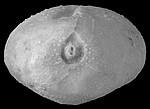 |
 |
 |
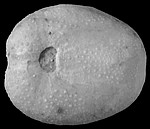 |
|
|
|
 |
|
|
| |
Eupatagus franciscanus
(Sanchez Roig,1953) |
|
|
|
|
|
description de
l'espèce par Kier, 1984 (qui la met en synonymie avec E. clevei) |
|
Fossil spatangoid
echinoids of Cuba, p.98 |
|
|
|
Eupatagus clevei
(Cotteau)
Plate 61 : figures 3-6; Plates
62-66
Material.-Many species
have been erected for specimens that differ only slightly from each
other; ail appear conspecific with E. clevei. Most of the
differences are the result of postmortem distortion, or they are
phenotypic variations, which are expected to occur in specimens of the
same species. Guppy (1882:192), Cooke (1948:93; 1959:89) and Zachos
and Shaak (1978:921) consider E. grandiflorus (Cotteau) and
E. clevei (Cotteau) to be synonymous. Both corne from the Eocene
of St. Bartholomew.
Sanchez Roig erected many new species of Eupatagus for
specimens that appear conspecific with each other and E. clevei.
They are ail from the same locality and include E. venturillae
(Plate 62: figures 1, 2), E. brevipetalum (Plate 62: figures
3-6), E. herrerae (Plate 65: figures 1-4), E. zanoletti
(Plate 66: figures 4-6), Lajanaster venturillae (Plate 65:
figures 5, 6; Plate 66: figures 1, 2), L. guevarai and
Zanolettiaster herrerae (Plate 61: figures 5, 6). E. rojasi
Sànchez Roig (Plate 64: figures 3-5) is found near this locality. Its
apical system is more central than in the holotype of E. clevei,
but this appears to only be due to postmortem distortion. The two
species are similar in having long, broad petals. The holotype of
E. zanoletti Sanchez Roig is lost, but a topotypic specimen (Plate
66: figures 4-6) referred to this species by Sanchez Roig is
indistinguishable from E. clevei.
The holotype of Megapatagus franciscanus Sanchez Roig (Plate
63) is also very similar to E. clevei.
Although the holotype of Herreraster herrerae Sanchez Roig is
lost, a topotypic specimen (Plate 64: figures 1, 2) has the same long,
wide petals so typical of E. clevei.
Eupatagus ingens Zachos from the Eocene of Florida also appears
to be a synonym of E. devei.
Eupatagus hildae Hawkins from Jamaica is probably synonymous
with E. clevei. Both species have a large test with long, wide
petals and the same general appearance. As only one specimen is known
of E. hildae and its age is uncertain, I am unwilling to
synonymize it with E. clevei.
The St. Bartholomew, American, and Jamaican specimens referred to
E. clevei are Eocene; whereas, the Cuban specimens corne from the
Oligocene-Miocene. It is unusual for a spatangoid species to have such
a long stratigraphic range. Perhaps, if better material was available,
specific distinctions might be apparent between the Cuban and Eocene
specimens. I cannot separate them now.
Occurence.—Types of
E. clevei and E. grandiflorus from Eocene of St.
Bartholomew. E. clevei has also been reported from Jamaica,
Curacao, and from the late Eocene, USGS loc. 16889. Madden Airfield,
15 mi (24 km) N of central part of Panama City; Rio Tonosi, 300 ft
(91.4 m) below the mouth of Quebrada Guerita (USGS 8289), Panama.
E. ingens is from the late Eocene Ocala Limestone in Florida. The
type specimens of Eupatagus brevipetalu, E. herrerae,
E. venturillae, E. zanoletti, Lajanaster venturillae,
L. guevarai , and Zanolettiaster herrerae came from beds
referred to the Oligocene (Oligocene-Miocene herein) at "La Venturilla"
farm, Realengo, Charco Hondo, Mor6n, Camagüey Province, Cuba. The type
of Eupatagus rojasi carne from "Las Cabezadas" farm, Corral
Naranjo, 12 km E of Marroquin, Mor6n, Camagüey Province.
Herreraster herrerae came from "Las Cuevas" farm, Realengo, Charco
Hondo, Ranchuelo district, Mor6n, Camagüey Province. The holotype of
Megapatagus franciscanus is from "San Francisco de la Rosa"
farm, Guadalupe district, Mor6n, Camagüey Province, Cuba. All of these
localities were considered by Sanchez Roig to be Oligocene but are
herein considered Oligocene-Miocene.
One poorly preserved specimen (ANSP 16638) in the Palmer Collection in
the Academy of Natural Sciences of Philadelphia, probably belongs to
the species. It is from Palmer locality no. 1476, riprap along
Nuevitas beach, about Km 73 on railroad to Pastelillo (taken from cut
at Km 74), Camagüey Province, Cuba. Palmer assigned a late Eocene age
to this locality.
Comparison with other species.—E.
clevei resembles in many characters Eupatagus turibacoenis
Sanchez Roig from the late Eocene of Cuba. Both species have large
tests with the anterior ambulacrum flush or in a very slight groove;
long, wide petals with wide interporiferous zones, and peristomes of
similar outline and position. The holotype of E. turibacoensis
has its petals slightly constricted near their extremities, whereas in
E. clevei they are narrower and less constricted. However, the
holotype of Megapatagus turibacoensis Sanchez Roig, which
occurs with the lectotype of E. turibacoensis and is herein
considered a probable synonym of it, has petals indistinguishable from
E. clevei. Obviously, E. clevei and E. turibacoensis
are very closely related and may be synonymous.
|
|
Remarks.—Of the Cuban
specimens that I have seen and consider to belong to this species,
none are well-enough preserved to show the nature of the tubercles
within the peripetalous fasciole. They are visible, however, on
specimens from the late Eocene of Panama that Cooke (1948:92) referred
to Eupatagus clevei (Cotteau). One of the Panamanian specimens
is crushed but has its tuberculation extremely well preserved (Plate
66: figure 3). The tubercles within the fasciole are only slightly
larger than those outside and are not sunken in deep scrobicules.
Synonyms
Megapatagus
franciscanus Sânchez Roig
PLATE 63
Material.—Only one
specimen known, the holotype (SRC 4473). This specimen is not
distorted but is highly weathered, lacking tubercles and obscuring
the fascioles. Peristome filled with matrix, test broken around
periproct.
Shape and size.—Length
127 mm, width 102 mm (80% L), height 62 mm (49% L); greatest width and
height anterior.
Apical system.—Four
genital pores, ethmolytic with madreporite extending far posterior of
posterior ocular plates, anterior at distance from anterior margin to
center of genital pores equal to 38% L.
Ambulacra.—Anterior
ambulacrum III not petaloid, in very faint groove, pores very small
adapically, not markedly diffferentiated from pores on margin of test;
greatest width of ambulacrum 0.65% L.
Anterior petals (II and IV) extending to margin, flush, length 50% L,
greatest width 15% L. Interporiferous zone very wide, greatest width
9.2% L; poriferous zone narrow 2.9% L, pores conjugate, outer pore
more elongate than inner; adapical porepairs in anterior poriferous
zone smaller than in posterior poriferous zone; 96 petaloid porepairs.
Posterior petals (V and I) extending almost to margin, length 56% L,
greatest width 15% L, interporiferous zone very wide 8.7% L,
poriferous zone narrow, 3.1% L; 110 petaloid porepairs.
Peristome.—Anterior,
located at distance from anterior margin to anterior edge of peristome
equal to 27% L. Peristome filled with matrix, but width estimated to
be 13% L, height 6% L.
Periproct.—Fractured
obscuring opening; on slightly overhanging posterior truncation;
height of opening estimated at 17% L, width 13% L.
Fascioles.—Obscured by
weathering.
Oral plate arrangement.—Sutures
not clear due to fracturing of test.
Occurence.—Oligocene-Miocene,
"San Francisco de la Rosa" farm, Guadalupe district, Moron, Camagüey
Province, Cuba.
Remarks.—Sanchez Roig
(1953a:58) erected a new genus, Megapatagus, with this species
as the type-species. Fischer (1966:U586) considers it to be a synonym
of Eupatagus. I can see no characters distinguishing the two
genera.
planche 63 (extrait)
dorsal, ventral, and
right side views of holotype of Megapatagus franciscanus Sanchez roig,
Oligocene-Miocene from San Francisco de la rosa farm, guadalupe
district, Moron, Camagüey Province, cuba
|
|
|
|
| |
Eupatagus franciscanus
(Sanchez Roig,1953) - Miocène inférieur, N. de Turtla gutierrez,
Chiapas, Mexique, 107 mm |
|
|
|
|
|
|
|
|
 |
|
|
| |
Eupatagus hildae (Hawkins,1927) |
|
|
|
|
|
diagnose originale de l'espèce par Hawkins,1927 |
|
Jamaican fossil
Echini, p.66 |
|
|
|
Eupatagus
hildae Hawkins, sp. nov.
1927. Mem. M. C. Z., 50, p. SI, pi. 22, fig. 9, 10.
None of the Arnold material seems to resemble this
species, which is known from only a single specimen taken near Brown's
Town, Parish of St. Ann. Whether it is identical with or distinct from
Jackson's "species A" (1922, Carnegie inst. Wash., Publ. 306, p. 90)
can only be determined when more material is available. The specimen
described by Jackson is from an unknown locality in Jamaica and is
quite different from any Eupatagus in the present collection. |
|
|
|
| |
Eupatagus hildae (Hawkins,1927)
- Oligocène, Chiapas, Mexique, 90 mm |
|
|
|
|
|
|
|
|
 |
|
|
| |
Eupatagus minutus
Laube,1868 |
|
|
|
|
|
diagnose originale de l'espèce par Laube,1868 |
|
Ein Beitrag zur
Kenntnis der Echinodermen des vicentinischen Tertiärgebietes, p.35 |
|
|
|
Eupatagus minutus
Laube.
Tab. VI, Fig. 4
Schale oval, stark
gerundet, etwas herzftrmig, flach. Vordere Petalen langer als die
hinteren, schwach geschwnngen, fast unter
einem geraden Winkel zusammentreffend, hintere gestreckt,
spitzwinkelig sich vereinigend.
Petalen geschlossen. Porenzonen am Ursprung sehr eng, dann sich bald
verbreiternd, aus langlichen Poren zusammengesetzt, welche in
getrennten Furchen liegen. Interporiferenzone so breit als die
Poriferenzonen. Scheitel fast concentriseh, klein, mit vier grossen
OvarialOffnungen. Stirnfurche breit und
seicht, bis zum Peristome reichend. Dieses tief gelegen, schmal,
halbmondfbrmig, mit breiten Mundstrassen. Schild breit, stumpf,
gekielt. Die Oberflache ist fast glatt, zwischen den Petalen sieht man
nur ganz vereinzelte grosse
Warzenhocker, etwa 8-10 im Ganzen und weniger. Die peripetale Fasciole
ist weit gegen den Rand
vorgerückt. Die Unterseite ist starker granulirt. Die auf der
Mnndseite gelegenen Hücker nehmen gegen
den Rand hin an
Grosse ab aber an Zahl
Desor's Synop. 414
gibt von
Eupatagus nummulinus
folgende Diagnose:
Petite espèce ovale déprimé,
à tubercules peu
nombreux. Le fasciole peripétal est plu; rapproché du bord que dans le
E.
ornatus.
Eine
Diagnose, die noch vollkommmener ist als die von
Agassiz im Catal. rayon. (Ann. d. sciences natur. VII,
p. 99). Die
wenigen Merkmale, welche Desor angibt, konnen nicht hinreichen die Art
genau zu fixiren, wesshalb
lob seine Diagnose, selbst far den Fall als meine Species gemeint ware,
nicht berticksichtigen kann. Nach
Agassiz und Desor
stammt ttbrigens
Eup. nummulinus
ans dem Grobkalke
von Parnes, also ans einem
ganz anderen
Horizonte als die vorliogenden Exemplare, welche von Prof. Suess in
den Schichten von Laverda gefunden wurden.
Lange des abgebildeten Exemplares 21 Millim., Breite 21 Millim., Mille
11 Millim., Lange der vorderen
Petalen 7 Millim., Lange der hinteren 7 Millim.
Planche VI (extrait)
|
|
|
|
| |
Eupatagus minutus
Laube,1868
- Oligocène, Dimitrovgrad, Haskovo, Bulgarie, 48 mm |
|
|
|
|
|
|
|
|
 |
|
|
| |
Eupatagus multituberculatus (Dames,1877) |
|
|
|
|
|
diagnose originale de l'espèce par Dames, 1877 |
|
Die Echiniden der
vicentinischen und veronesischen Tertiaerablagerungen p.76 |
|
|
|
Euspatangus.
E u s p a t a n g
u s m u l t i t u b e r c u l a t u s nov. sp.
Tafel VI, Fig. 4.
? Eupatagus
Scilla.e Quenstedt. Echinides p. 681, t. 89, f. 17 (non! f. 18),
Länge: 50 mm., Breite: 44
mm., Halle: 21 mm. (grösstes Exemplar).
Der Umriss ist oval, die
Vorderseite leicht eingesenkt, die Hinterseite abgestumpft. Die
Oberseite ist regelmassig gewolbt, auf der hinteren Hälfte mehr ais
auf der vorderen. Der Scheitel liegt etwas excentrisch nach vorn. Von
ihm aus zieht sich eine deutliche, aber breite und flache Furche bis
zum Peristom. Die vorderen Ambulacren divergiren unter einem sehr
stumpfen Winkel. Die Porenzonen bestehen nus 25-26 Porenpaaren, die
Poren eines Paares durch tiefe Furchen verbunden. Die hinteren
Ambulacren sind linger ais die vorderen, clivergiren unter einem sehr
spitzen Winkel und bestehen ans jederseits 30-31, ebenso wie die
vorderen gestalteten Porenpaaren. Die Innenzonen aller vier paarigen
Ambulacren sind mit mehreren (3 bis 4) unregelmissigen Reihen von
Karnehen besetzt, zwischen denen zahlreiche feinere zerstreut sind. An
den Randern der vorderen Ainbulacralfurche verlauft jederseits eine
Reille grosserer K5rnchen, die Mitte derselben nehmen ganz kleine,
dicht gedringt stehende Karnelien ein. Die paarigen
Interambulacralfelder sind bis zum Rand mit grasseren gekerbten und
durchbohrten, in kleinen, runden, glatten Höfchen stehenden Warzen
bedeckt. Sie sied in 5-6 parallele Reihen geordnet, weche in der Mitte
einen Winkel bilden, Der dem Scheitel zunächst gelegene, sehmale Theil
der Interambulacren ist ohne grössere Tuberkeln. Das unpaarige
Interambulacralfeld trägt voila Scheitel bis zum Periproct eine
dentliche First und ist ganz und gar bis zur Fasciole ebenso geziert,
wie die Ambulacralfelder, also mit grasseren Karnchen, zwischen denen
feinere zerstreut stehen. Die Peripetalfasciole verläuft noch auf der
Oberseite, aber dicht über dem Rande, erhebt sich in der Mitte
zwischen tien vorderen und hinteren Ambulacralfeldern etwas mehr über
den Rand und schliesst in einem leicht nach hinten geschwungenen Bogen
etwa 7 mm. vor dem oberen Rande des Periprocts das hintere
Interambulacralfeld. Die Fasciole ist überall gleieh breit und sehr
sohmal. Der Raurn zwischen ihr und dem Lande ist mit sehr feinen,
gleich grossen Karnehen dicht besetzt. Die Unterseite ist auf dem
vorderen Theil flach, der hintere Theil culminirt in einer in der
Medianlinie unter dem Periproct gelegenen Spitze, über welche die
Subanalfasciole hinwegliuft. Die Seiten sind mit den bei
Euspatangus überall erscheinenden radial verlaufenden
Tuberkelreihen besetzt und zeigen nichts Ungewohnliches. Das Peristom
ist gross, quer-oval, mit deutlicher Lippe. Der untere Theil des
vorderen Ambulacrums bleibt auf der Unterseite fast glatt in der
Breite des Peristoms. Vom Peristom aus dehnt sich ein an Breite stets
zunehmender breiter glatter Raum ans, dem hinteren
Interannbulacralfeld der Oberseite entsprechend. Am Rande
desselben, nach den Seiten zu, sieht man hier und da einige
vereinzelte Poren. Auf diesem Felde machen sich zwei Dreiecke
besonders bernerkbar. Dieselben stossen mit ihrer Spitze zusammen, und
da sie fast gleiche Höhe haben, fällt dieser Treffpunkt ziemlich in
die Mitte zwischen Peristom und Hinterrand. Das vordere Dreieck hat
eine gara kleine Basis (mir die Breite der hinteren Peristomlippe),
ist etwas über die Fläche der übrigen Saale
|
|
erhaben und
an der Basis mit 8-9 grösseren Tuberkeln besetzt ; ausserdem zeigen
sich noch drei grössere Wärzehen übereinander in der Medianlinie. Das
hintere der beiden Dreiecke ist dagegen beinahe gleichseitig, und mit
grisseren Wärzchen in regelmässigen Reihen derart besetzt, Bass das
grOsste Wärzchen im oberen Scheitel steht und dieselben nach hinten an
Grösse abnehnen. Der übrige Theil der Unterseite erscheint zuerst ganz
glatt, unter der Loupe zeigt er jedoch sehr feine, weit voneinander
stehende Körnchen. Das Periproct liegt hart oben am abgestutzten
Hinterrande, ist längs-oval und gross. Eine Subanalfasciole liegt
unter ihm. Dieselbe ist breiter ais die Peripetalfasciole, folgt dem
unteren lande des Periprocts, wendet sich daim jederseits vertikal
nach unten und trifft, von beiden Seiten horizontal kommend, auf der
oben erwanten erhabenen Spitze der Uuterseite zusammen. Der von dieser
Fasciole eirigeschlossene Raum ist mit Körnern bedeckt, die in der
Mitte am grössten, nach der Fasciole zu kleiner werden.
Das der Species Eigenthümliche geht zur Genage aus der Beschreibung
hervor; keine ander Euspatangus-Art hat auf der Oberseite so
weit bis zum Rande herabsteigende grossere Stachelwarzen, und
demgemliss auch keine so nahe dem Rande verlaufende Peripetalfasciole,
wie die vorliegende, und ebenso wenig ein so grosses glattes Plastrum
auf der Unterseite, des man auf der hinteren Hälfte mit einem
verhältnisemässig kleinen Dreieck voll Wärzehen geziert ist. Die
Untersehiede von anderen Arten anzugeben, erscheint daher überflüssig,
nur Euspatangus Veronensis Ag. muss noch in Vergleich gezogen
werden, und wird des bei Besprechung dieser Art geschehen. — Nach dem
Gesammthabitus der abbildung des Eu. Scillae bei Quenstedt (1.
c. Taf. 89, Fig. 17 [non! 18]) zu urtheilen ist in derselben ein
Exemplar unserer Art zu erblicken.
Es liegen im Ganzen vier Exemplare vor, zwei davon aus den Tuffen von
S. Giovanni Ilarione, und zwei vom Monte Zugiello bei Montecchia (naeh
Meneguzzo's Etiquette: presso la casa Gambojin o Vitivinario).
planches VI(extrait)
|
|
|
|
| |
Eupatagus multituberculatus (Dames,1877)
- Miocène, Langhien inférieur, Iskaszentgyorgy, Bakony Mountains,
Hongrie, 53 mm |
|
|
|
|
|
|
|
|
| |
Eupatagus multituberculatus (Dames,1877)
- Lutetien ?, Iskaszentgyorgy, Bakony Mountains, Hongrie, 45 mm |
|
|
|
|
|
|
|
|
 |
|
|
| |
Eupatagus murrayensis
Laube,1863 |
|
|
|
|
| |
Eupatagus murrayensis
Laube,1863 - Miocène inférieur, Mannum formation, Mannum,
Australie du Sud, 28 mm |
|
|
|
|
|
|
|
|
| |
Eupatagus murrayensis Laube,1863
- Miocène inférieur, Mannum formation, Mannum, Australie du Sud,
23 mm |
|
|
|
|
|
|
|
|
| |
Eupatagus murrayensis Laube,1863
- Miocène inférieur, Mannum formation, Mannum, Australie du Sud,
30 mm |
|
|
|
|
|
|
|
|
 |
|
|
| |
Eupatagus ornatus (Defrance
in
Brongniart,1827) |
|
|
|
|
|
description de
l'espèce par Cotteau |
|
Paléontologie
française, terains éocènes, tome 1, p. 45 |
|
|
|
N° 8. -
Euspatangus ornatus (Defrance),
Agassiz
1867.
Pl. 6, 7, 8 et
9.
M. 26., M. 27.
Espèce de taille assez forte, ovale, oblongue, très légèrement
échancrée en avant, un peu acuminée en arrière. Face supérieure
déprimée, uniformément renflée, déclive sur les côtés. Face inférieure
presque plane, un peu creusée autour du péristome, renflée, subcarénée
dans l'aire interambulacraire postérieure. Face postérieure rentrante
et obliquement tronquée. sommet ambulacraire excentrique en avant.
Sillon antérieur presque nul vers le sommet, un peu plus accentué aux
approches de l'ambitus qu'il entame légèrement, vaguement renflé sur
les bords. Aire ambulacraire impaire droite, aiguë près du sommet,
s'élargissant insensiblement, finement granuleuse, formée de pores
petits, simples, logés dans des fossettes circulaires qui s'espacent
en s'éloignant du sommet. Aires ambulacraires paires pétaloïdes, à
fleur de test, subflexueuses, acuminées et fermées à leur extrémité,
les antérieures fortement divergentes, presque horizontales, les
autres beaucoup plus rapprochées et formant un angle aigu. Zones
porifères un peu déprimées, moins larges que l'intervalle qui les
sépare, composées de pores inégaux unis par un sillon profond qui
alterne avec une petite bande de test saillante et granuleuse.
Les zones porifères antérieures, aux approches du sommet, sont plus
étroites, et les pores, en partie atrophiés, deviennent très petits.
Tubercules de deux natures : les plus gros, limités aux aires
interambulacraires antérieures de la face supérieure, sont très
développés, assez abondants, mamelonnés, perforés, crénelés,
profondément scrobiculés, épars et parfaitement circonscrits par le
fasciole péripétale. Les autres sont beaucoup plus petits et se
montrent, à la face supérieure, dans l'aire interambulacraire
postérieure, dans la région antérieure, sur les bords du sillon
antérieur, à la face inférieure ; iles sont disposés en séries
obliques, homogènes, très régulières et recouvrent tout l'espace qui
est en dehors de l'aire ambulacraire antérieure et des deux aires
ambulacraires postérieures. Cet espace paraît lisse, mais en réalité
est recouvert de granules fins et serrés. Péristome excentrique en
avant, semi-circulaire, labié. Périprocte assez grand, subcirculaire,
placé à la partie supérieure de la face postérieure. Appareil apical
compact, étroit, granuleux, muni de quatre pores génitaux ; la plaque
madréporiforme se prolonge en arrière ; les petites plaques ocellaires
se groupent autour de l'appareil et sont visiblement perforée.
Fasciole péripétale très distinct, resserré, à peine flexueux,
entourant tous les gros tubercules et passant à l'extrémité des aires
ambulacraires paries. Fasciole sous-anal entourant l'écusson anal, un
peu plus large que le fasciole péripétale.
Hauteur, 22 millimètres ; diamètre antéro-postérieur, 56 millimètres ;
diamètre transversal, 47 millimètres.
Variété circulaire : hauteur, 19 millimètres ; diamètre
antéro-postérieur, 46 millimètres ; diamètre transversal, 47
millimètres.
Variété de grande taille : hauteur, 30 millimètres ; diamètre
antéro-postérieur, 84 millimètres ; diamètre transversal 75
millimètres.
Cette espèce présente quelques variations qu'il importe de signaler :
la plupart des exemplaires sont allongés, ovales, et le diamètre
antéro-postérieur est beaucoup plus long que le diamètre transversal.
Il n'en est pas toujours ainsi ; chez certains exemplaires, les deux
diamètres sont à peu près égaux, et le test prend un aspect arrondi,
subcirculaire, très remarquable. Les gros tubercules de la face
supérieure varient également dans leur aspect, dans leur nombre et
leur grosseur, mais ces différences ont relativement peu d'importance,
et la physionomie générale de l'espèce est toujours à peu près la
même. Une variété, cependant, paraît plus tranchée et plus constante
que les autres, et ce n'est pas sans quelque hésitation que nous la
réunissons au type. C'est la variété qu'on rencontre, à un niveau
stratigraphique inférieur, à La Gourèpe (rocher du Goulet) : sa taille
est plus forte, sa forme générale plus dilatée, plus arrondie en
avant, et son sillon
|
|
antérieur
plus atténué n'entame point l'ambitus ; les aires ambulacraires
antérieures sont plus droites, moins flexueuses ; les aires
ambulacraires postérieures sont relativement plus longues, moins
arrondies, plus effilées ; les gros tubercules sont plus nombreux,
surtout dan les aires interambulacraires antérieures, et descendent
plus bas, ainsi que le fasciole qui les circonscrit. Ces différences
impriment à cette variété un faciès qui la fait facilement reconnaître
; elles ne nous ont pas paru suffisantes pour établir une espèce
nouvelle.
Rapports et différences.
- L'E. ornatus, très commun à Biarritz et répandu dans toutes
les collections, sera toujours facilement reconnaissable à sa taille
assez forte, à sa forme déprimée, à son sillon antérieur vaguement
indiqué, à ses aires ambulacraires larges et flexueuses, à ses gros
tubercules abondants, fortement scrobiculé, descendant plus ou moins
bas, toujours nettement circonscrits par un étroit fasciole.
Histoire. - Très anciennement connue, cette belle espèce a été, dans
l'origine, désignée sous le nom de Spatangus ornatus, qu'elle a
conservé longtemps. C'est en 1847, qu'Agassiz, la séparant avec raison
du genre Spatangus, en a fait le type du genre Euspatangus,
que les auteurs ont adopté.
Localités. - Lou Cout,
roches Saint-Martin, Basta, promontoire de la Talaye, Roche Percée,
côtes des Baques, etc. Niveau supérieur de Biarritz. La Gourème.
Niveau inférieur de Biarritz (Basses-Pyérénées) ; Préhac (Landes).
Ascrot, en face de Puget-Téniers (Alpes-Maritimes). Commun. Eocène
supérieur (zone inférieure et supérieure). Couches à Euspatangus
ornatus et à Serpula spirulaea.
Ecole des mines de Paris, Muséum de Paris (collection d'Orbigny),
collection de la Sorbonne (M. Hébert). Institut catholique. Collection
Pellat, de Bouillé, Croizier Boreau, Degrange-Touzin, Collot,
Gauthier, Peron, ma colleciton.
Localités autres que la France.
- Montserrat (province de Barcelone) ; Saint-Michel du Fay, Vich
(Catalogne). Vicentin (Italie).
Explication des figures.
- Pl. 6, fig. 1, E. ornatus, de la Roche Percée près de
Biarritz, de la collection, vu de côté ; fig. 2, face supérieure ;
fig. 3, face inférieure ; fig. 4, face postérieure ; fig. 5, appareil
apical et aire ambulacraire antérieure grossis, pris sur un exemplaire
de la collection de M. Pellat ; fig. 6, gros tubercules grossis, pris
sur un autre exemplaire de la collection de M. Pellat. - Pl. 7, fig.
1, E. ornatus, variété de forme circulaire, de la Roche Percée
près de Biarritz, de ma collection, vu sur la face supérieure ; fig.
2, péristome grossi ; fig. 3, portion de la face inférieure, grossie ;
fig. 4, plaque ambulacraire prise à la face inférieure, grossie. - Pl.
8, fig. 1, E. ornatus, variété de la Gourèpe près Biarritz, de
ma collection, vu sur la face supérieure ; fig. 2, aire ambulacraire
postérieure grossie ; fig. 3, autre exemplaire, variété de la Gourèpe
près Biarritz, de la collection de M. Pellat, vu de côté ; fig. 4,
face supérieure ; fig. 5, portion de la face inférieure grossie. - Pl.
9, fig. 1, autre exemplaire, variété gibbeuses, de la collection de M.
Degrange-Touzin, vu de côté ; fig. 2, face supérieure ; fig. 3, autre
exemplaire de très grande taille, de la collection de M. Degrange-Touzin,
vu sur la face inférieure.
Extrait planches
6, 7, 8 et 9
|
|
|
|
| |
Eupatagus ornatus (Defrance
in
Brongniart,1827)
- Oligocène, Pyrénées Atlantiques, 61 mm |
|
|
|
|
|
|
|
|
 |
|
|
| |
Eupatagus planulatus Kruse &
Phillip, 1985 |
|
|
|
|
| |
Eupatagus planulatus Kruse &
Phillip,
1985 - Oligocène supérieur, Australie du Sud, 23 mm |
|
|
|
|
|
|
|
|
 |
|
|
| |
Eupatagus rotundus Duncan,1877,
1915 |
|
|
|
|
|
description de
l'espèce par Duncan, 1877 |
|
On the
Echinodermata of the Australian Cainozoic (Tertiary) Deposits, p. 53 |
|
|
|
Eupatagus rotundus,
sp. nov. Plate III. figs. 14-17.
The test is thin, and the outline of the ambitus is nearly circular,
there being a slight flatness posteriorly where the anus is situate on
a truncation which slants slightly from above downwards and inwards.
The vertex is nearly central, and thence there is a slight slope to
the apical system ; the slope continues anteriorly, and then dips down
suddenly to the ambitus. Behind the vertex a keel passes backwards
horizontally beyond the line of the posterior ambulacral petals, and
the slope increases to the margin of the periproct. The rest of the
posterior part is obliquely truncate, the surface of the truncation
being slightly concave from side to side. The periproct is large and
high up. The height of the vertex is about 2/3 of the length of the
test. On either side of the vertex the test slopes down in a bold
curve to the ambitus. The apical system is eccentric and in advance of
the vertex, and is slightly depressed (Pl. III. fig. 15). There are
four large genital openings : the two anterior are closer together
than the two posterior, which are separated by the madreporiform body,
which extends beyond the posterior ; they are large, and each is more
or less perfectly surrounded by a circle of miliary tubercles. The
ocular pores are large, and form the angles of a pentagon which
incloses the generative tract. There is no groove for the odd anterior
ambulacrum, which spreads out towards the ambitus, being bounded
laterally by a faint ridge on either side, and crossed by the
peripetalous fasciole at about 1/3 of the whole distance from the
ambitus to the apical system. There are a few pores crowded near the
apex of the ambulacrum, and a few widely apart between it and the
fasciole.
The anterior pair of petals are widely divergent, lanceolate, slightly
pointed externally ; and their poriferous zones are sunken and broad,
the hinder ones being the broadest. The pores are rudimentary in the
upper part of the front zones ; and elsewhere they are largest in the
hinder zones. The pores are nearly round, the external row being more
or less ovoid ; they are conjugate, and the ridges intervening between
the pairs are raised and ornamented with miliaries. There are from 24
to 26 pairs of pores in the posterior poriferous zones of these
ambulacra. The interporiferous space is slightly broader than the
posterior poriferous zone, is convex, and ornamented with large
miliaries. The posterior pair of petals ragher close to each other,
are slightly shorter than the anterior ; they are broader, however,
and less pointed at the end. The poriferous zones of these posterior
ambulacra are sunken, and are nearly equal in breadth ; there are the
same number of pores as in the anterior ; and the other details are
much the same in both. The interporiferous zone is broader than in the
anterior pair of ambulacra, and is convex and rather above the
ordinary level of the test.
The peripetalous fasciole (Pl. III. fig. 15) passes round the
extremities of the lateral and of the posterior petals, and across the
odd anterior ambulacrum ; it passes bnehind the posterior petals in an
irregular course, but on the whole it is elliptical in its outline in
the posterior half, and rather angular and wavy in the anterior. It is
situated nearer to the apical system than to the ambitus, except
anteriorly, where it is nearest to the ambitus. The tuberculation of
the abactinal surface below the fasciole is uniform, and the tubercles
are smaller near the fasciole and larger
|
|
towards the
ambitus ; everywhere they are crowded, and in many places there are
vacant spots like crescent fascioles. The small secondary tubercles in
this part are perforate and crenulate, and the scrobicule is often
imperfect and oblique, whilst there may not be a perfect miliary
scrobicular circle. Above the fasciole and in the posterior
interambulacral space the tuberculation is small, and like that of the
interporiferous zones, there being neither large secondary nor primary
tubercles. In the anterior and in the antero-lateral interambulacra
there are large primary and secondary tubercles irregularly arranged
and sparsely distributed, but occupying the whole of the spaces. The
primaries have a perforated mamelon, crenulated boss, and a flat
scrobicule. The edge of the ambitus is rather sharply rounded. The
actinal surface slopes upwards in front anterior to the mouth, and is
more or less convex posteriorly, on account of the sharp keel of the
posterior extremity of the interambulacral actinal plastron. The mouth
is slightly sunken anteriorly ; and the posterior lip is rounded and
projects downwards slightly, being, unlike the rest of the
circumference of the opening, very tuberculate (Pl. III. fig. 16). The
actinal anterior and lateral ambulacra form short and almost smooth
avenues ; and the posterior ambulacra form wide, almost smooth bands
extending from the subanal fasciole on either side of the keel to the
sides of the mouth and behind the posterior lip. The anal system is
large, and almost circular in outline, and is situated in the
obliquely truncated posterior extremity, of which it occupies nearly
one half (Pl. III. fig. 17). The subanal fasciole is closed, heart-shaped,
and reaches to the point of the keel of the plastron. The poriferous
areas of the anterior odd and paired ambulacra on the actinal surface
show a few slit-like pores surrounded by a scrobicule-like rim, which
occupy the position of large tubercles. There are also corresponding
pores in the posterior ambulacral zones close to the mouth. The
tuberculation of the anterior interambulacra on the actinal surface is
larger near the mouth, and so is that of the lateral interambulacra ;
but the tubercles diminish in size and increase in number towards
certain points on the ambitus ; within the posterior actinal
interambulacral space the tubercles radiate from the point of the keel,
and the largest are the remotest from it. The mouth is large, broader
than long, curved in front, and encroached upon behind by the
projecting posterior lip.
Length 2 8/10
inches, breadth 2 7/10,
height of vertex 1 5/10
inch.
Locality. - Tertiaries of the Murray river.
planche III
(extrait)
|
|
|
|
| |
Eupatagus rotundus Duncan,1877
- Miocène inférieur, Mannum Fm, Janjukian, Murray river, Australie
du Sud, 29 mm |
|
|
|
|
|
|
|
|
 |
|
|
| |
Eupatagus vasseuri
(Cotteau,1885) |
|
|
|
|
|
diagnose originale
de l'espèce par Cotteau, 1885 |
|
Paléontologie
française, terrains Eocènes, tome 1, p.58 |
|
|
|
N° 12. —
Euspatangus vasseuri, Cotteau, 1885.
PI. 13, Pl.
14, fig. 1 et 2.
Euspatangus, sp. (ornatus affinis), Vasseur, Recherches géol.
sur les terr. tert. de la France occid., p. 140, 1881.
Espèce de taille moyenne, oblongue, allongée, un peu échancrée en
avant, subacuminée et légèrement tronquée en arrière. Face supérieure
peu élevée, uniformément bombée, subdéclive sur les côtés, arrondie au
pourtour, ayant sa plus grande épaisseur dans la région postérieure.
Face inférieure presque plane, renflée dans l'aire interambulacraire
impaire. Face postérieure tronquée, légèrement rentrante. Sommet
ambulacraire très excentrique en avant. Sillon antérieur nul près du
sommet, large et très vaguement accusé vers l'ambitus. Aire
interambulacraire impaire droite, aiguë à sa partie supérieure,
composée de pores petits, simples, espacés, rangés par paires obliques
placées dans des fossettes. Les plaques ambulacraires sont hautes,
granuleuses, bien développées. Aires ambulacraires paires largement
pétaloïdes, à fleur de test, inégales, les antérieures très
divergentes, acuminées à leur extrémité et beaucoup plus courtes que
les autres, les postérieures plus droites, plus arquées, formant un
angle aigu. Zones porifères composées de pores inégaux, les externes
allongés, les internes plus arrondis, unis par un sillon profond,
séparés par de petites bandes de test saillantes et granuleuses. Dans
les aires ambulacraires paires antérieures, les zones porifères
antérieures sont un peu moins larges que les autres et composées de
pores plus petits, sans être atrophiés ; la zone interporifère est un
peu plus large que les zones porifères qui la circonscrivent. Gros
tubercules mamelonnés, perforés, crénelés, fortement scrobiculés,
abondants, occipant les aires interambulacraires antérieures, limités
par un fasciole péripétale très distinct. Petits tubercules inégaux,
beaucoup moins développés que les autres, si ce n'est sur le bord des
aires ambulacraires, à la face inférieure. Granulation intermédiaire
fine, serrée, abondante. Péristome excentrique en avant, à fleur de
test, ne paraissant pas labié, semicirculaire. Appareil apical étroit,
compacte, muni de quatre pores génitaux. Fasciole péripétale étroit,
non sinueux, limitant les aires ambulacraires et les gros tubercules.
Fasciole sous-anal bien visible dans un de nos exemplaires. |
|
Hauteur, 20 millimètres; diamètre antéro-postérieur, 46 millimètres ;
diamètre transversal, 38 millimètres.
Rapports et différences.
- Cette espèce offre assurément quelque ressemblance avec l'E. °malus
; elle nous a paru cependant s'en distinguer par sa taille moins
forte, par son sommet ambulacraire un peu plus excentrique en avant,
par son sillon antérieur encore plus atténué, par ses aires
ambulacraires plus inégales, les antérieures relativement plus
courtes, les postérieures plus étroites et plus allongées, par ses
gros tubercules plus nombreux. Notre espèce offre également quelques
rapports avec l'E. Tournoueri, mais cette dernière espèce se
reconnaîtra toujours facilement à sa forme moins allongée, à son
sillon antérieur moins accusé, à ses aires ambulacraires moins
développées, à ses gros tubercules moins nombreux, moins apparents et
plus inégaux; ce sont deux types voisins, mais cependant bien
différents.
Localité. — Les
Rochettes près Soullans (Vendée). Rare. Éocène moyen.
Collection de la Sorbonne (M. Vasseur).
Explication des figures.
- Pl. 13, fig. 1, E. Vasseuri, vu de côté; fig. 2, face
supérieure; fig. 3, face inférieure; fig. 4, fragment montrant une
portion de la face supérieure; fig. 5, le même grossi. — Pl. 14, fig.
1, autre exemplaire vu sur la face antérieure ; fig. 2, aire
ambulacraire grossie.
planches 13 et
14
(extrait)
|
|
|
|
| |
Eupatagus vasseuri (Cotteau,1885)
- Lutétien, Tavertet, Barcelone, espagne, 67 mm |
|
|
|
|
|
|
|
|
 |
|
|
| |
Eupatagus wrighti (Laube,1869) |
|
|
| |
Eupatagus wrighti (Laube,1869) -
Oligocène supérieur, Australie du Sud, 22 mm |
|
|
|
|
|
|
|
|
 |
|
|
|
|
Genre
Spatagobrissus
Clark,1923
The echinoderm fauna
of South Africa, p.402
Espèce type
Spatangobrissus mirabilis
Clark,1923
, p.402
(désignation originale)
Extension
stratigraphique (bibliographique,
non vérifiée) : Miocène moyen -
Actuel |
|
|
|
|
|
diagnose originale
du genre par Clark, 1923 |
|
The Echinoderm
Fauna of South Africa, p.402 |
|
|
|
Spatagobrissus mirabilis
gen. et sp. nov.
Plate XXIII.
Test wide, low, well rounded in front, the ambitus rounded behind, but
below ambitus interambulacrum 5 slopes abruptly forwards making an
oblique surface on which opens the longitudinally elongated periproct.
Peristome anterior, not deeply sunken. Ambulacrum III narrow. Hush,
not very distinct, ambulacra I and V moderately wide, conspicuously
petaloid, the petals rather long, bluntly pointed, distinctly
depressed; ambulacra II and IV similar, the petals as long or longer,
and more divergent than I and V. Peripetalous fascicle a single very
distinct band, enclosing a nearly circular area, containing numerous
large primary tubercles. Subanal plastron small, subanal fasciole very
distinct. Genital pores 4.
The above paragraph may serve for the generic diagnosis while the
following additional data apply more particularly to the species.
(...) |
|
planche XXIII :
espèce type du genre (extrait)
|
|
|
|
 |
|
|
| |
Spatagobrissus
dermodyorum
Holes, AH YEE &
KRAUSE,2005 |
|
|
|
|
|
diagnose originale
de l'espèce par Holmes, Ah Yee & Krause, p.94 |
|
Two new Middle
Miocene spatangoids (Echinoidea) from the Murray Basin, South Australia |
|
reproduced with
courtesy of Museum of Victoria, Memoirs of the Museum of Victoria (62) |
|
|
|
Spatagobrissus dermodyorum
sp. nov Figures 6A–E, 7A–C, 8A–E
Type Material. Holotype. NMV P312570 from early
Middle Miocene Glenforslan Formation (Batesfordian), Morgan Group, in
the vicinity of NMV locality PL3203, 7 km NNE of Murray River Lock 1,
Blanchetown, South Australia.
Paratypes, NMV
P312571–P312373 from the same general area. Other material used for
statistical purposes is held in Museum Victoria and private
collections.
Description. Test small, subcircular in outline
with minimal posterior truncation and no anterior sulcus. Specimens
range 30.0–45.5 mm in length with maximum width 82–90%TL occurring
51–58 %TL from anterior ambitus. Maximum height 49.5–60%TL at
52.6–65.5%TL from anterior ambitus. Adapical surface moderately
inflated, evenly curved transversely above well-rounded margin with
ambitus situated at about 30%TH. Adoral surface very mildly convex but
with prominent posterior keel caused by sharp rise of ambulacra I and
V posterior to centre. In lateral view, posterior truncation covers
about 35%TH.
Apical system ethmolytic
with 4 genital pores, centre 31.3–38.6%TL from anterior ambitus (Fig.
7A). Paired petals short (26.5–32.5%TL measured along surface of
perradial suture from centre of apical disk), narrow (7.0–9.0%TL),
lanceolate, closing to closed, posterior pair marginally longer than
anterior pair. Anterior pair diverge at about 135°, posterior pair
310°. Pore pairs conjugate, inner pores oval, outer-tear shaped.
Anterior row of pore pairs in anterior paired petals distinctly
narrower than posterior row and atrophied adapically. Interporiferous
zone up to 1.5 times width of poriferous zone at widest point.
Ambulacrum III flush adapially, with 2 rows of indistinct
longitudinally orientated pore pairs and interporiferous zone
containing few secondary tubercles and numerous miliaries.
Peripetalous fasciole
subcircular, not indented. Numerous small, randomly spaced perforate,
crenulate, primary tubercles occur in interambulacra within fasciole.
Outside fasciole, tubercles in posterior half of test very small, but
anterior to centre, gradually increasing in size towards
interambulacra 2 and 3.
Peristome reniform, mildly
sunken, width 16.0–19.3%TL, length 8.9–10.3%TL with anterior border
23.4–26.8%TL from anterior ambitus. Phyllodes moderately developed
with slotshaped pores in circular depressions. Labrum short and
wedgeshaped extending only to centre of second pair of adjacent
ambulacral plates. Anterior edge raised above surrounding ambulacra
and slightly projecting over peristome. Miliary tubercles present with
few secondary tubercles in anterior half (Fig. 7B).
Plastron long, width about
55–60% length, with ambulacral plates indenting posteriorly. Subanal
fasciole circular to transversely oval, enclosing 3 pore pairs each
side of interradial suture, and with slight anterior projection at
posterior end of prominent plastronal keel. Posterior edge of fasciole
marginally clear of periproct opening. Adorally, ambulacra I and V
relatively wide, covered with very fine, randomly spaced miliary
tubercles up to sixth plate, then by tubercles of similar size to rest
of adoral surface.
|
|
Periproct, tear-drop
shaped, generally positioned vertically on truncated posterior margin
but slightly visible from above on some specimens; height
17.1–19.1%TL, width 13.2–16.0%TL.
Etymology. Named for Michael and Marie Dermody,
owners of Glenforslan Station.
Remarks. Spatagobrissus dermodyorum sp.
nov. differs primarily from the Middle Miocene Port Campbell Limestone
species, Spatagobrissus laubei (Duncan, 1877), in having
narrower test with more posterior maximum width (Fig. 8A), markedly
larger peristome and periproct (Fig. 8D, E), and very much shorter
labrum (Fig. 8B). In addition, anterior paired petals are shorter and
posterior petals longer (Fig. 8C), with divergent angle of latter
greater than S. laubei. Aboral primary tubercles larger within
peripetalous fasciole and interambulacra 2 and 3, while fine tubercles
outside fasciole on posterior half of test are much smaller in
diameter. Adorally, plastron wider and longer, and ambulacra I and V
narrower.
The extant type species
Spatagobrissus mirabilis is characterised by a larger (up to 110
mm long) and less inflated test, more posteriorly located apical
system in line with maximum width, greater area enclosed by
peripetalous fasciole, shorter peristome, and periproct situated on an
obliquely truncated surface below the ambitus. Primary tubercles
within the peripetalous fasciole of S. mirabilis are also
larger and more closely spaced than in S. dermodyorum.
Spatagobrissus incus
Baker and Rowe, 1990, an extant species endemic to southeast
Australian waters, particularly between Flinders Island (Tasmania) and
western Spencer Gulf, South Australia, has a larger and more rounded
test (up to 80 mm long) and, similar to S. mirabilis, more
posteriorly located apical system and greater area enclosed by
peripetalous fasciole.
Compared with S.
dermodyorum, it also has a much wider and longer plastron and
narrower adoral ambulacra I and V. Miskelly (2002: 156) noted two
pairs of pore pairs occur in each side of the subanal fasciole, a
feature also recorded for S. laubei (McNamara et al., 1986:
80). This contrasts with the three pairs found on S. dermodyorum
(Fig. 7C).
figures 6 à 8
(extrait)
|
|
|
|
| |
Spatagobrissus
dermodyorum
Holes, AH YEE &
KRAUSE,2005
- Miocène, Blanchetown, Australie, 40 mm |
|
|
|
|
|
|
|
|
 |
|
|
| |
Spatagobrissus laubei
(Duncan,1877) |
|
|
|
|
|
diagnose originale
de l'espèce par Duncan,1877 |
|
On the
Echinodermata of the australian cainozoic (Tertiary) deposits, p.55 |
|
|
|
|
|
Eupagatus
Laubei, sp. nov. Plate III. fig. 18.
The test is thin, depressed, elliptical in outline,
but narrow and somewhat pointed posteriorly. There is slight
truncation of the posterior interambulacrum. The antero-lateral and
posterior petals are nearly equal in length and breadth, and are
lanceolate, the anterior pair diverging more than the others. The
poriferous zones of both ambulacra are equal in breadth, are slightly
suriken and the anterior poriferous zone of the antero-lateral petals
is the smallest. The pores are conjugate, those of the antero-lateral
zones being the largest ; and in both ambulacra those of the inner rom
are rounder and smaller than those of the outer, there being 13 or 14
rows in each petal. The interporiferous zone is slightly convex, and
has miliaries and third-sized tubercles ; and miliaries crowd the
elevations between the successive pairs of pores. The anterior odd
ambulacrum is nearly flush, bounded by tubercles larger than those
within its area, and contains a few pores. The apical system is
very small, and nearly central ; there are four generative pores, the
posterior pair being the widest apart, and the madreporiform body
passing between them. The peripetalous faseiole is narrow, and
incioses a cordiform space. Tuberculation small evervwhere but there
are larger tubercles grouped within than without the fasciole, and
they become smaller towards the sharply rounded ambitus. The
actinosome is well in front, the anterior part being sunken ; the
phyllodes are distinct ; the plastron is nearly smooth and the
tuberculation of the actinal surface, which is throughout becomes
larger remotely from the ambitus.
Height
6/10
inch, length 16/10
inch, breadth 14/10 inch.
Locality.—Section
1 mile west of the mouth of the Sherbrook river, lower part of cliff. |
|
The small tubereles, the depressed shape, the equal size of the
petals, the very thin fasciole and the far forward mouth distinguish
this species, which I have dedicated to the excellent paleontologist
Prof. Laube.
The next group of Australien Echini is very characteristie of the
Tertiary marine deposits of the southern provinces. Members of it have
been found in the corresponding formation of New Zealand. in the later
Tertiaries of Java, and in the Eocene, Miocene, and Pliocene
strata of Europe.
figures 6 à 8
(extrait)
|
|
|
|
| |
Spatagobrissus laubei
(Duncan,1877)
- Miocène moyen, Batesfordian, Est de Port Campbell, victoria,
australie, 33 mm |
|
|
|
|
|
|
|
|
 |
|
|
|

![]()
![]()

![]()
![]()



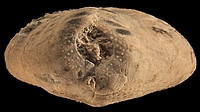
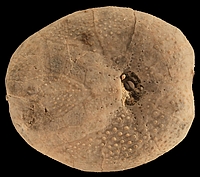
,%20apical,%20Illerdien,%20Huesca,%20Espagne,%2032%20mm.jpg)
,%20detapical,%20Illerdien,%20Huesca,%20Espagne,%2032%20mm.jpg)
,%20ambital,%20Illerdien,%20Huesca,%20Espagne,%2032%20mm.jpg)
,%20periprocte,%20Illerdien,%20Huesca,%20Espagne,%2032%20mm.jpg)
,%20oral,%20Illerdien,%20Huesca,%20Espagne,%2032%20mm.jpg)
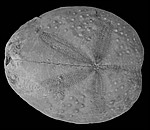


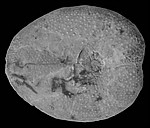
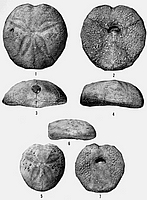
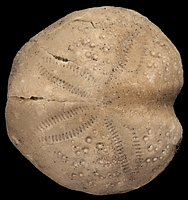
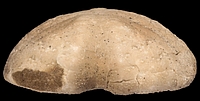

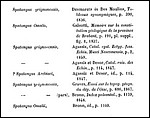
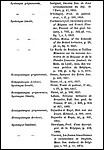



,%20periprocte,%20Lutetien,%20Chavignon,%20Aisne,%2036%20mm.jpg)
,%20oral,%20Lutetien,%20Chavignon,%20Aisne,%2036%20mm.jpg)
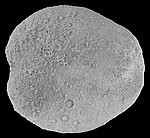

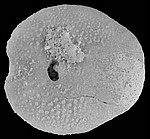
,%20apical,%20Eocene,%20Chauvifnon,%20Aisne,%2039%20mm.jpg)
,%20oral,%20Eocene,%20Chauvifnon,%20Aisne,%2039%20mm.jpg)
,%20apical,%20Eocene,%20Chauvignon,%20Aisne,%2029%20mm.jpg)
,%20ant,%20Eocene,%20Chauvignon,%20Aisne,%2029%20mm.jpg)
,%20oral,%20Eocene,%20Chauvignon,%20Aisne,%2029%20mm.jpg)
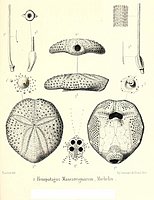
%20Agassiz,%20planche%2016.jpg)
,%20apical,%20La%20Puebla%20de%20Roda,%20Huesca,%20Espagne,%20Eocène,%2031%20mm.jpg)
,%20periprocte,%20La%20Puebla%20de%20Roda,%20Huesca,%20Espagne,%20Eocène,%2031%20mm.jpg)
,%20ant,%20La%20Puebla%20de%20Roda,%20Huesca,%20Espagne,%20Eocène,%2031%20mm.jpg)
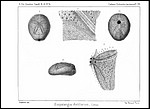
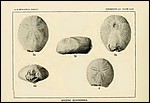
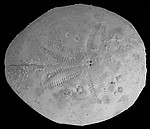
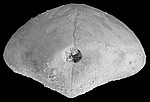

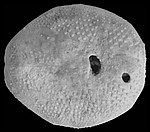
,%20amb,%20valada,%20Barcelone,%20Espagne,%20Lutétien,%2055%20mm.jpg)
,%20apical,%20vilada,%20Barcelone,%20Espagne,%20Lutétien,%2043%20mm.jpg)

,%20detapical,%20Miocène,%20Gozo,%20Malte,%2044%20mm.jpg)

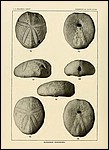





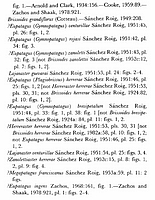
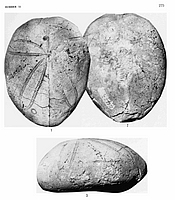
,%20periprocte,%20Oligocène,%20Chiapas,%20Mexique,%2090%20mm.jpg)
,%20oral,%20Oligocène,%20Chiapas,%20Mexique,%2090%20mm.jpg)
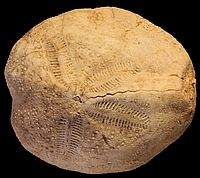

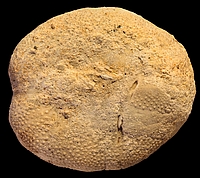
,%20periprocte,%20Miocene,%20Langhien%20inferieur,%20Iskaszentyorgy,%20Bakony%20Mts,%20Hongrie,%2053%20mm.jpg)
,%20ant,%20Miocene,%20Langhien%20inferieur,%20Iskaszentyorgy,%20Bakony%20Mts,%20Hongrie,%2053%20mm.jpg)
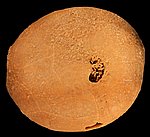
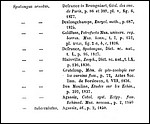






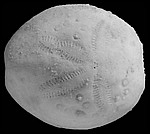
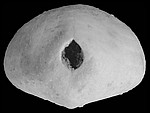
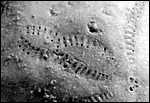


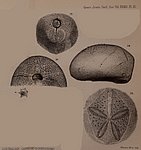
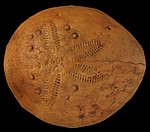

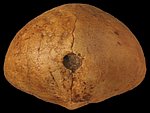
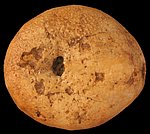
,%20apical,%20Tavertet,%20Barcelone,%20Espagne,%20Lutétien,%2067%20mm.jpg)
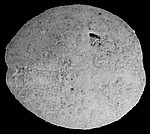
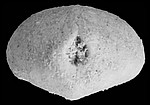

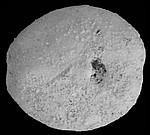
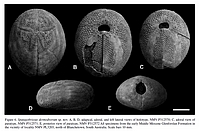




,%20ant,%20Miocene%20moyen,%20Batesfordian,%20Est%20de%20Port%20Campbell,%20Victoria,%20Australie,%2033%20mm.jpg)